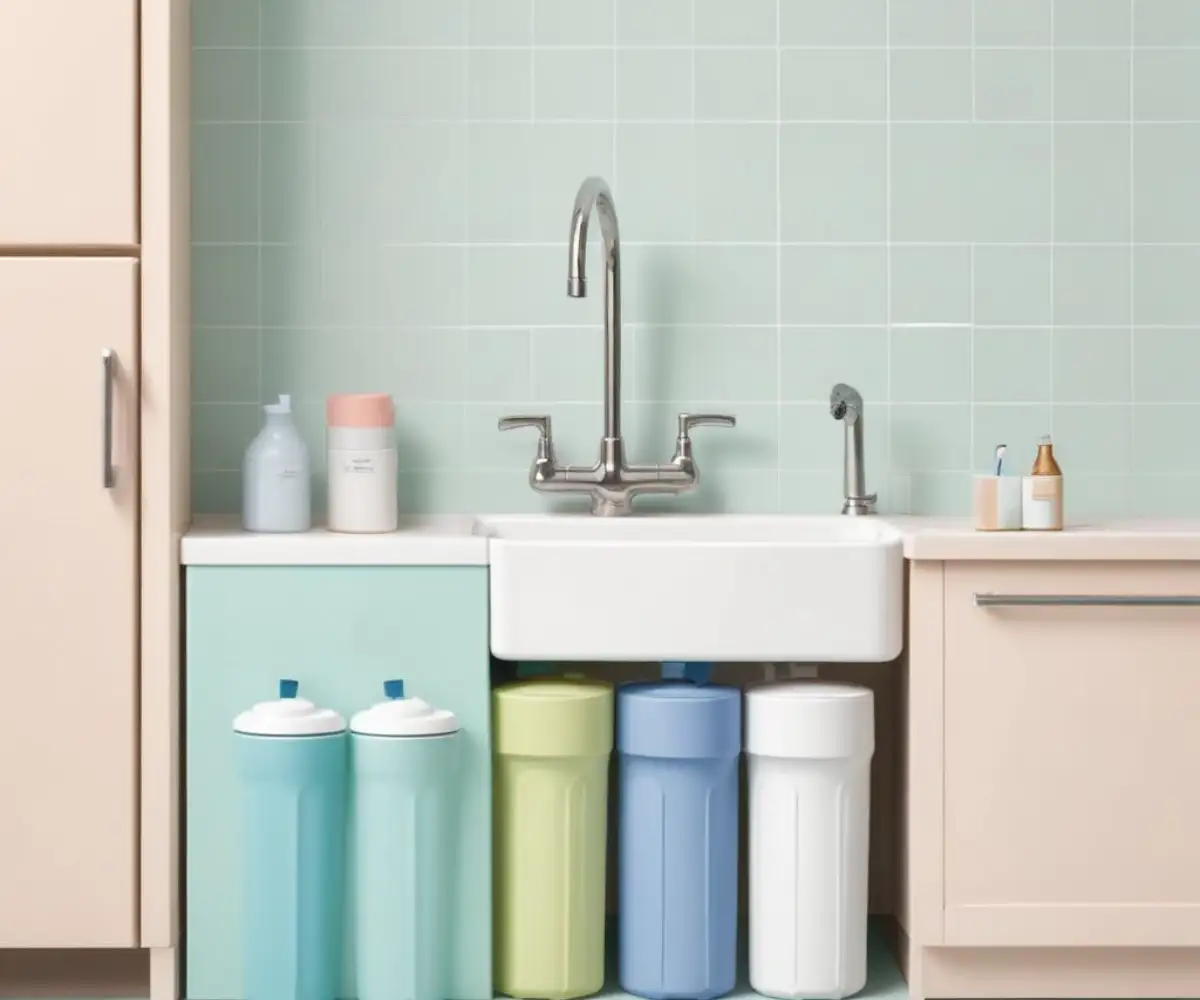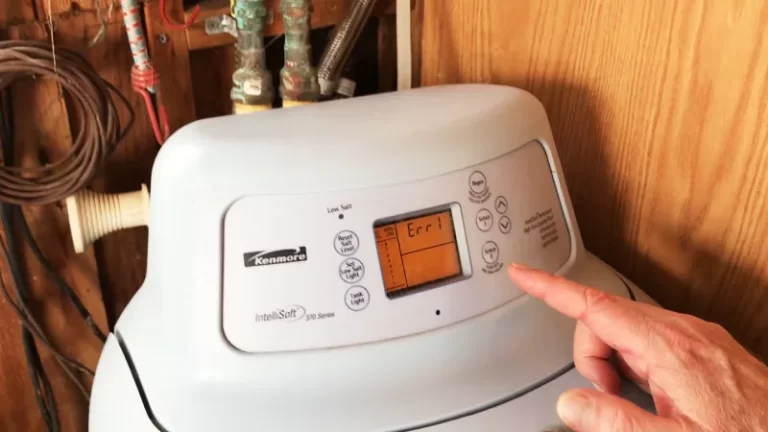3 Stage vs 5 Stage Reverse Osmosis: The Truth Before You Buy
Choosing a water filtration system can feel overwhelming. You know you want clean, safe, great-tasting water, but the market is flooded with options, numbers, and technical jargon. The most common point of confusion is often the choice between a 3-stage and a 5-stage reverse osmosis (RO) system.
Is more always better? Do those extra two stages in a 5-stage system justify the higher price tag? This guide will cut through the noise, solve this exact problem, and give you the confidence to select the perfect RO system for your home.
You'll Learn About
The Core Confusion: Why Do More Stages Even Exist?
The central problem for many homeowners is a simple one: value. You don’t want to overspend on filtration you don’t need, but you also don’t want to cut corners and end up with a system that doesn’t solve your water quality issues. Marketing often complicates this by suggesting that a higher stage count automatically equals superior water.
The reality is that the “best” system depends entirely on your source water and your specific goals. Both 3-stage and 5-stage systems are highly effective, but they are designed for slightly different challenges. Understanding what each stage does is the key to making an informed decision.
Decoding the 3-Stage RO System: The Powerful Workhorse
A 3-stage reverse osmosis system is the foundation of RO filtration and a highly effective choice for many households, particularly those on municipally treated water. It is a simple, dependable, and powerful setup designed to tackle the most common water contaminants.
Stage 1: The Sediment Pre-Filter
This is the first line of defense for your entire system. The sediment filter is responsible for capturing larger particles like dirt, sand, rust, and silt. Its primary job is to protect the subsequent, more delicate filters from getting clogged, which ensures the system runs efficiently and lasts longer.
Stage 2: The Carbon Block Pre-Filter
Next, the water flows through a carbon filter. This stage uses activated carbon to remove chemical contaminants, most notably chlorine and chloramines, which are often used by cities to disinfect water. Removing chlorine is critical not only because it improves the taste and smell of your water, but also because chlorine can damage the sensitive reverse osmosis membrane.
Stage 3: The Reverse Osmosis Membrane
This is the heart of the system. The semi-permeable RO membrane has microscopic pores (around 0.0001 microns) that allow water molecules to pass through but block a vast array of other contaminants. This stage is incredibly effective at removing up to 99% of total dissolved solids (TDS), including heavy metals like lead and arsenic, salts, and fluoride.
Unpacking the 5-Stage RO System: Is It Superior Filtration?
A 5-stage RO system builds upon the solid foundation of the 3-stage model by adding extra layers of filtration for enhanced purification and improved taste. This system is often recommended for those with more challenging water sources or for individuals who want the highest possible water quality.
Stages 1-3: A Familiar Foundation
The first three stages of a 5-stage system are typically the same as in a 3-stage unit: a sediment pre-filter, a carbon pre-filter, and the RO membrane. Some variations might include two carbon pre-filters for extra protection against chlorine, especially in areas with heavily treated water.
Stage 4: The Carbon Post-Filter
After the water leaves the RO membrane and the storage tank, it passes through a final carbon filter. This is often called a “polishing” filter. Its sole purpose is to remove any lingering tastes or odors that the water may have picked up while sitting in the storage tank, ensuring the water you drink is exceptionally crisp and fresh.
Stage 5: The Optional Enhancement (Remineralization or UV)
The fifth stage offers specialized treatment. Most commonly, this is an alkaline remineralization filter. Because the RO process is so effective, it also removes beneficial minerals like calcium and magnesium, which can make the water taste “flat” or slightly acidic. This stage adds those healthy minerals back, improving the taste and raising the pH for a more natural, balanced flavor.

Head-to-Head Battle: A Direct Comparison
To make the choice clearer, here is a direct, at-a-glance comparison of the two systems. This table breaks down the key differences and will help you align your needs with the right features.
| Feature | 3-Stage RO System | 5-Stage RO System |
|---|---|---|
| Core Contaminant Removal | Excellent (Removes TDS, lead, chlorine, fluoride) | Excellent (Removes the same core contaminants) |
| Taste & Odor | Good (Removes chlorine and many odors) | Superior (Post-filter polishes water for exceptional taste) |
| Mineral Content | Removes most minerals, can result in slightly acidic water | Often includes a remineralization stage to add back healthy minerals |
| Initial Cost | More affordable upfront | Higher initial investment |
| Maintenance Cost | Lower (Fewer filters to replace) | Higher (More filters to replace annually) |
| Footprint Under Sink | More compact, requires less space | Larger, requires more installation space |
| Ideal Water Source | Treated city/municipal water | Well water or city water with high chlorine/taste concerns |
The Deciding Factor: Which System Is Right for Your Home?
Ultimately, the choice is not about which system is objectively “better,” but which one is better suited for your specific situation. Your water source, budget, and personal preferences should guide your decision.
Choose a 3-Stage RO System If…
You are on treated municipal water that is already relatively clean. Your primary goal is to remove major contaminants like lead, chlorine, and dissolved solids for safer, better-tasting water. You are also working with a tighter budget or have limited under-sink space.
Choose a 5-Stage RO System If…
You use well water, which can contain a wider variety of contaminants and sediment. You are particularly sensitive to the taste and odor of water and want the crispest, freshest result possible. You are also concerned about the slightly acidic nature of RO water and prefer the taste of mineral-rich spring water.
Beyond the Stage Count: Factors Everyone Overlooks
Choosing between three and five stages is the main event, but several other critical factors are often ignored during the buying process. Paying attention to these details will ensure you’re happy with your investment for years to come.
Wastewater and Your Plumbing
All reverse osmosis systems produce wastewater, also known as brine, which carries the rejected contaminants down the drain. While this is a normal part of the process, it highlights the importance of overall plumbing health. Being mindful of what goes down your drains is always a good practice, as unexpected issues can arise. For instance, understanding how certain materials can cause problems, like a sodium polyacrylate clog, emphasizes the need for responsible plumbing maintenance when introducing new appliances.
The Hidden Cost: Long-Term Filter Replacement
The initial purchase price is only part of the story. Five-stage systems have more filters, which means higher annual replacement costs. It’s crucial to calculate the total cost of ownership over a five-year period. When comparing these ongoing expenses, it helps to put the total investment into a broader context. For example, considering the full price of a Maytag water treatment system can make the yearly filter costs for an under-sink RO unit seem much more manageable.
Water Taste and the pH Debate
Many users who are new to RO water describe it as tasting “flat” or “empty.” This is due to the removal of minerals that our palates are accustomed to. A 5-stage system with a remineralization filter directly solves this by adding back trace amounts of calcium and magnesium. This not only improves the flavor profile, making it closer to premium bottled water, but also raises the pH, counteracting the slight acidity created by the RO process.
Frequently Asked Questions
What is the main difference between a 3-stage and a 5-stage reverse osmosis system?
The primary difference is the number of filtration stages. A 3-stage system typically includes a sediment filter, a carbon filter, and the reverse osmosis membrane. A 5-stage system builds on this by adding extra filtration steps, such as additional carbon filters or a post-carbon polishing filter.
Is a 5-stage system better than a 3-stage system?
A 5-stage system offers more thorough purification by including additional filters that can remove more contaminants, such as chlorine and organic compounds. This results in enhanced taste and odor of the water. However, a 3-stage system is still highly effective at removing the majority of common contaminants.
What are the typical stages in a 5-stage RO system?
A standard 5-stage system usually consists of a sediment pre-filter, a granular activated carbon pre-filter, a carbon block pre-filter, the reverse osmosis membrane, and a final post-carbon filter for polishing. Some systems may include a remineralization stage to add beneficial minerals back into the water.
Which system should I choose for my home?
For general home use with typical tap water, a 3-stage system is often sufficient for providing clean, great-tasting water. If your water has a high level of contaminants, or if you desire the highest level of purification and improved taste, a 5-stage system would be a better choice.
Are there differences in cost and maintenance?
Yes, 3-stage systems are generally more affordable upfront and have fewer filters to replace, resulting in slightly lower maintenance costs. 5-stage systems have a higher initial cost and require more frequent filter changes, though this can extend the life of the crucial RO membrane.
Do the systems differ in size and installation?
Three-stage systems are typically more compact and can be a good option for those with limited space, such as in apartments or for countertop units. Five-stage systems are larger due to the extra filter housings and may require more under-sink space for installation.
Making Your Final Decision with Confidence
The choice between a 3-stage and a 5-stage reverse osmosis system is now clear. It’s a decision based on a simple trade-off: a 3-stage system offers powerful, essential filtration at a lower cost, while a 5-stage system provides enhanced purification and superior taste for a higher investment.
By evaluating your water source, budget, and taste preferences, you can confidently select the right system. You now have the expert knowledge needed to provide your family with clean, safe, and great-tasting water for years to come.

